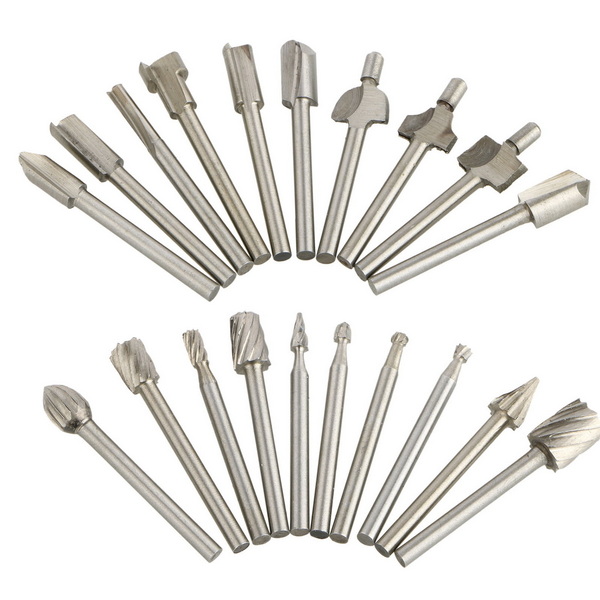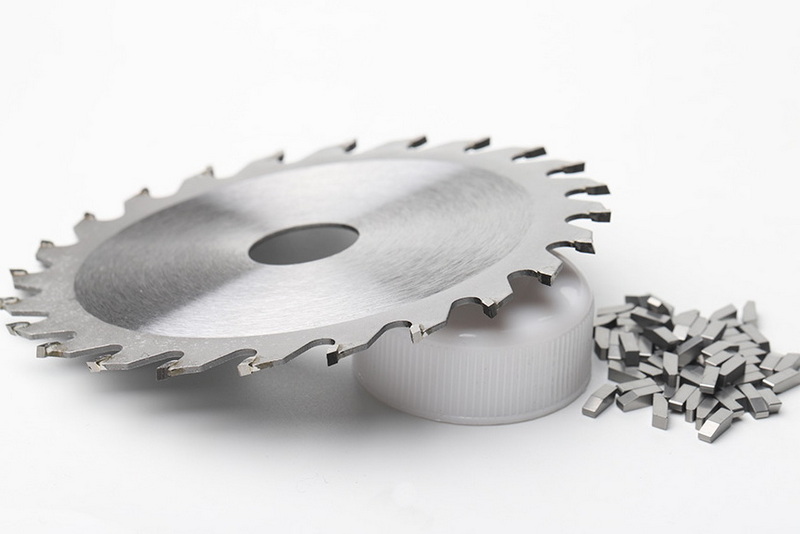Content Menu
● Introduction to Tungsten Carbide
● Sintering Process
>> Sintering Methods
● Machining Techniques
>> 1. Grinding
>> 2. Electrical Discharge Machining (EDM)
>> 3. CNC Machining
>> 4. Electrolytic Machining (ECM)
● Challenges and Considerations
● Applications of Shaped Tungsten Carbide
● Advanced Techniques for Shaping Tungsten Carbide
>> Additive Manufacturing
● Future Developments
● Economic and Environmental Impact
● Conclusion
● FAQs
>> 1. What is the primary method for creating complex tungsten carbide shapes?
>> 2. How is tungsten carbide typically machined after sintering?
>> 3. What are the challenges associated with machining tungsten carbide?
>> 4. What are some common applications of shaped tungsten carbide?
>> 5. What safety precautions should be taken when handling tungsten carbide powder?
● Citations:
Tungsten carbide is renowned for its exceptional hardness and durability, making it an ideal material for various industrial applications, including cutting tools, wear parts, and even in the aerospace sector. However, its hardness also poses significant challenges when it comes to shaping and machining. In this article, we will delve into the methods and techniques used to shape tungsten carbide, highlighting both traditional and advanced processes.

Introduction to Tungsten Carbide
Tungsten carbide is a composite material made from tungsten carbide particles bonded together by a metallic matrix, typically cobalt. Its hardness is measured on the Rockwell scale, often ranging from HRA78 to HRA90, which is significantly harder than most metals. This hardness makes it difficult to machine using conventional methods, necessitating specialized techniques and tools.
Sintering Process
Before shaping, tungsten carbide parts are often created through a sintering process. Sintering involves heating powdered tungsten carbide under high pressure without melting it, allowing the particles to fuse together into a solid mass. This process enhances the material's physical properties and allows for the creation of complex shapes.
Sintering Methods
1. Conventional Press and Sinter: This traditional method involves pressing the powder into a die before sintering. It is cost-effective and suitable for a wide range of applications.
2. Hot Isostatic Pressing (HIP): This method applies both heat and high pressure evenly across the material, reducing porosity and enhancing mechanical properties.
3. Spark Plasma Sintering (SPS): A rapid sintering technique using pulsed electric current, resulting in denser materials with finer microstructures.
4. Microwave Sintering: Uses microwave energy for heating, offering faster processing times and reduced energy consumption.
5. Laser Sintering: Utilizes laser energy to sinter powdered material layer by layer, ideal for additive manufacturing.
Machining Techniques
After sintering, tungsten carbide parts are machined to achieve precise shapes and dimensions. The following techniques are commonly used:
1. Grinding
Grinding is a crucial step for achieving high-quality surface finishes and maintaining dimensional accuracy. It includes surface grinding, external and internal cylindrical grinding, and PG profile grinding for curved surfaces. The choice of grinding wheel depends on the desired surface finish and the material's hardness.
2. Electrical Discharge Machining (EDM)
EDM is used for creating complex shapes and features, such as blind holes, without mechanical stress. It involves removing material through electrical discharges between electrodes. EDM is particularly useful for parts that require intricate designs or are difficult to access with traditional machining tools.
3. CNC Machining
CNC machining is employed for refining parts to their final dimensions, especially after quenching treatments that might cause deformations. It offers high efficiency and precision, allowing for the production of complex geometries with tight tolerances.
4. Electrolytic Machining (ECM)
ECM involves dissolving the carbide in an electrolyte, ensuring the surface doesn't heat up. This method is independent of the material's physical properties, making it suitable for delicate or precision work.
Challenges and Considerations
Shaping tungsten carbide poses several challenges:
- Hardness: Requires specialized tools and techniques.
- Brittleness: Prone to cracking under mechanical stress.
- Toxicity: Handling tungsten carbide powder requires safety precautions.
To mitigate these challenges, manufacturers often use advanced tool materials like diamond-coated tools for grinding and employ precise control systems during EDM and CNC machining.
Applications of Shaped Tungsten Carbide
Tungsten carbide is used in a variety of applications due to its hardness and durability:
- Cutting Tools: Drills, saw blades, and milling cutters.
- Wear Parts: Nozzles, seals, and bushings.
- Aerospace Components: Engine components and rocket nozzles.
- Medical Instruments: Surgical tools and implants.
- Industrial Wear Components: Gears, bearings, and other machinery parts.

Advanced Techniques for Shaping Tungsten Carbide
In recent years, advancements in additive manufacturing have opened new avenues for shaping tungsten carbide. Techniques like Selective Laser Sintering (SLS) and Electron Beam Melting (EBM) allow for the creation of complex geometries that were previously impossible to achieve with traditional methods.
Additive Manufacturing
Additive manufacturing offers several benefits:
- Complex Geometries: Enables the production of intricate shapes and internal structures.
- Reduced Material Waste: Only uses material necessary for the part, reducing waste.
- Increased Design Freedom: Allows for the creation of parts with complex internal features.
Future Developments
As technology continues to evolve, we can expect further advancements in the shaping of tungsten carbide. This includes improvements in sintering techniques, more efficient machining methods, and increased adoption of additive manufacturing technologies. Additionally, research into new binder materials and sintering conditions may enhance the mechanical properties of tungsten carbide, expanding its potential applications.
Economic and Environmental Impact
The production and shaping of tungsten carbide also have economic and environmental implications. The cost of specialized tools and equipment can be high, making it a significant investment for manufacturers. However, the long lifespan of tungsten carbide parts can lead to cost savings over time by reducing the need for frequent replacements. Environmentally, the use of tungsten carbide can help reduce waste by extending the life of machinery and tools, though the extraction and processing of tungsten can have environmental impacts.
Conclusion
Shaping tungsten carbide involves a combination of sintering and advanced machining techniques. Understanding these processes is crucial for producing high-quality parts that meet precise specifications. The choice of technique depends on the desired shape, size, and application of the final product. With ongoing advancements in technology, the possibilities for shaping tungsten carbide will continue to expand, enabling the creation of more complex and precise components.

FAQs
1. What is the primary method for creating complex tungsten carbide shapes?
The primary method for creating complex shapes in tungsten carbide is through sintering, which allows for the formation of intricate geometries while preserving the material's mechanical properties.
2. How is tungsten carbide typically machined after sintering?
After sintering, tungsten carbide is typically machined using techniques such as grinding, EDM, and CNC machining to achieve precise dimensions and surface qualities.
3. What are the challenges associated with machining tungsten carbide?
The main challenges include its extreme hardness, brittleness, and the need for specialized tools and techniques to avoid damage and ensure safety.
4. What are some common applications of shaped tungsten carbide?
Common applications include cutting tools, wear parts, aerospace components, medical instruments, and industrial wear components, where its hardness and durability are beneficial.
5. What safety precautions should be taken when handling tungsten carbide powder?
Handling tungsten carbide powder requires safety precautions due to its potential toxicity. Protective gear and proper ventilation are essential to minimize exposure risks.
Citations:
[1] https://www.reddit.com/r/Metalfoundry/comments/wbfwcy/tungsten_shaping/
[2] https://www.carbide-products.com/blog/how-tungsten-carbide-parts-made/
[3] https://www.linkedin.com/pulse/carbiderod-how-cut-tungsten-carbide-rod-shijin-lei
[4] https://grafhartmetall.com/en/tungsten-carbide-sintering-methods/
[5] https://www.youtube.com/watch?v=zOQZfhu9nl4
[6] https://www.carbide-products.com/blog/how-to-machine-tungsten-carbide/
[7] https://sawfish-endive-kgks.squarespace.com/shop/p/tungsten-carbide-pear-shaped-loop-tool-with-mopane-handle-the-hardest-pottery-trimming-tool-designed-by-hsin-chuen-lin
[8] https://www.carbide-part.com/blog/how-to-machine-tungsten-carbide/
















